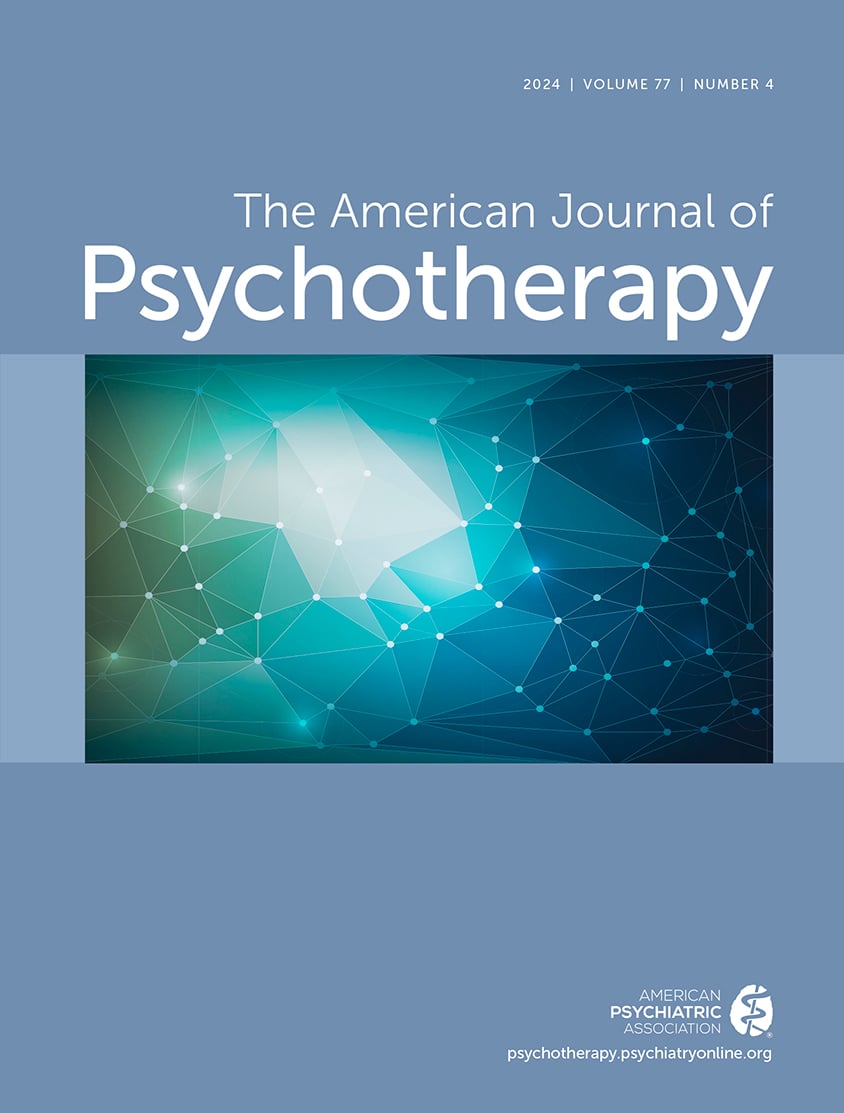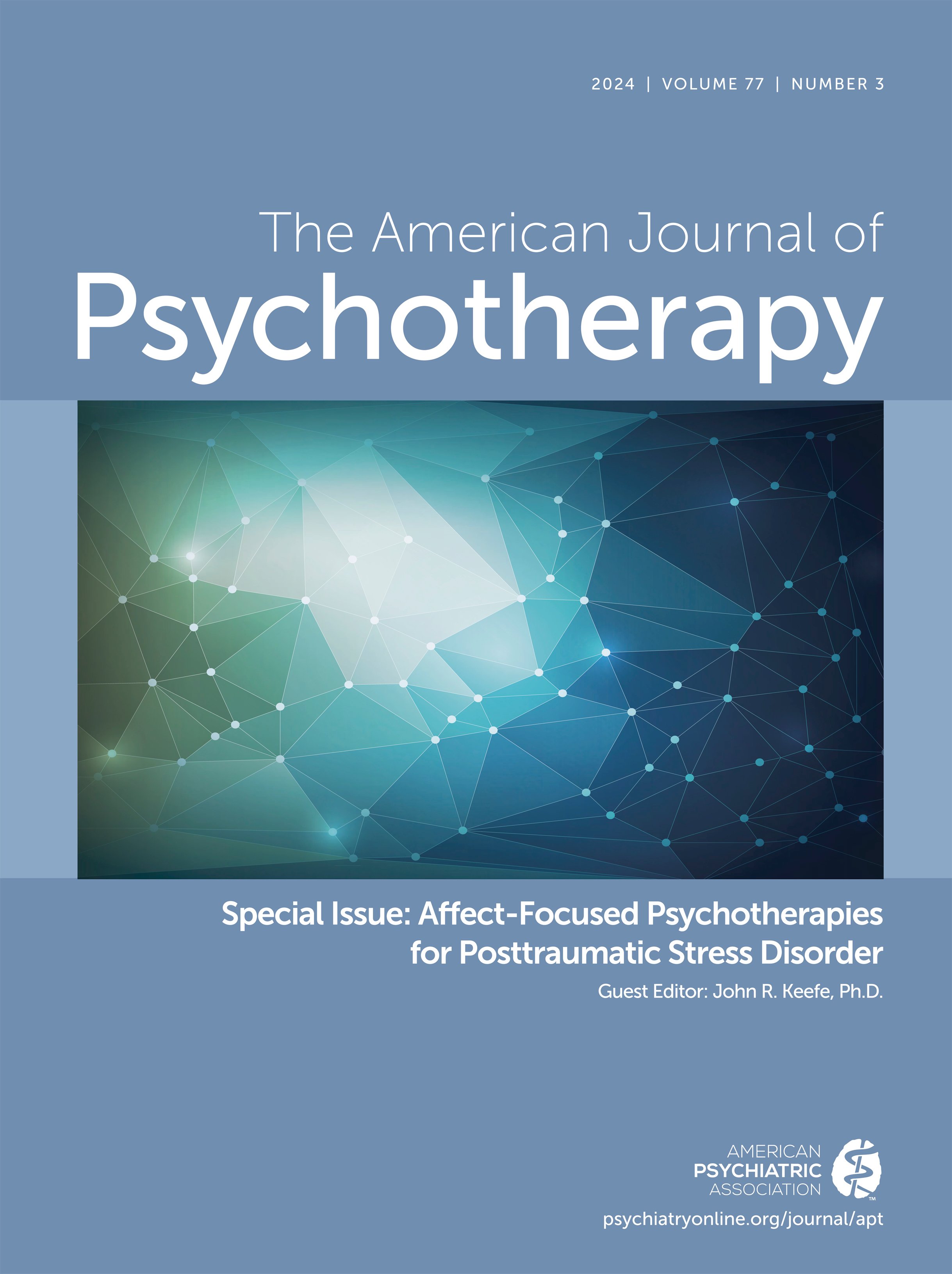American Journal of Psychotherapy
- Volume 52
- Number 1
- January 1998
Articles
Publication date: 01 January 1998
Pages1–17Therapists using transference and countertransference interpretations claim that they are efficacious, some even say essential, in achieving successful outcome in short-term dynamic therapy. Limited research, however, suggests careful and cautious usage ...
https://doi.org/10.1176/appi.psychotherapy.1998.52.1.1Publication date: 01 January 1998
Pages18–27Some borderline patients and some psychotic patients have a history of substance abuse and self-mutilation. Many experts, including a portion of psychoanalytic practitioners, view these patients as especially in need of “ego-supportive” interventions, ...
https://doi.org/10.1176/appi.psychotherapy.1998.52.1.18Publication date: 01 January 1998
Pages28–36Psychotherapy with evangelical Christians is a common occurrence. The unique history of the evangelicals’ attitude helps to understand some characteristics that accompany their pursuit of change in psychotherapy. Understanding these features as presented ...
https://doi.org/10.1176/appi.psychotherapy.1998.52.1.28Publication date: 01 January 1998
Pages37–53The literature related to the unique issues of engaging in psychotherapy with Orthodox Jewish patients is critically reviewed. Various forms of psychotherapy, including psychodynamic, cognitive, behavioral, couple, family, and group therapies, as ...
https://doi.org/10.1176/appi.psychotherapy.1998.52.1.37Publication date: 01 January 1998
Pages54–63Beyond the traditional ethical dilemmas involving psychotherapy, psychotherapists today are likely to face two additional and relatively complex ethical dilemmas: “cosmetic psychopharmacology” and the practice of psychotherapy within managed mental health ...
https://doi.org/10.1176/appi.psychotherapy.1998.52.1.54Publication date: 01 January 1998
Pages64–71The psychotherapeutic encounter may be experienced as threatening for severely traumatized patients because of fear of re-experiencing and retraumatization. This puts a focus on how different aspects of the transference and psychotherapeutic situation ...
https://doi.org/10.1176/appi.psychotherapy.1998.52.1.64Publication date: 01 January 1998
Pages72–87This article describes therapeutic approaches to problems of meaninglessness that beset many clients. The presentation includes: (a) a conceptual formulation of meaningful action and, by extension, meaningful living; (b) a delineation of some common ...
https://doi.org/10.1176/appi.psychotherapy.1998.52.1.72Publication date: 01 January 1998
Pages88–102In this paper we present vignettes of psychoanalytic treatment of an eight-and-a-half-year-old boy who is consulting for a progressive deterioration of language, inability to learn, tendency to be isolated, and lack of interest to relate with others. This ...
https://doi.org/10.1176/appi.psychotherapy.1998.52.1.88Publication date: 01 January 1998
Pages103–115This paper offers the novice psychotherapist a general orientation to the experience and problems of conducting individual psychotherapy. An implicit but clearly humanistic philosophy is presented through pragmatic and time-tested general observations and ...
https://doi.org/10.1176/appi.psychotherapy.1998.52.1.103Publication date: 01 January 1998
Pages116–118https://doi.org/10.1176/appi.psychotherapy.1998.52.1.116Book Review
Publication date: 01 January 1998
Pages119–120https://doi.org/10.1176/appi.psychotherapy.1998.52.1.119Publication date: 01 January 1998
Pages120–121https://doi.org/10.1176/appi.psychotherapy.1998.52.1.120Publication date: 01 January 1998
Pages121–123https://doi.org/10.1176/appi.psychotherapy.1998.52.1.121Past Issues
View Issues Archive
Vol. 77 | No. 4

Vol. 77 | No. 3

Vol. 77 | No. 2
